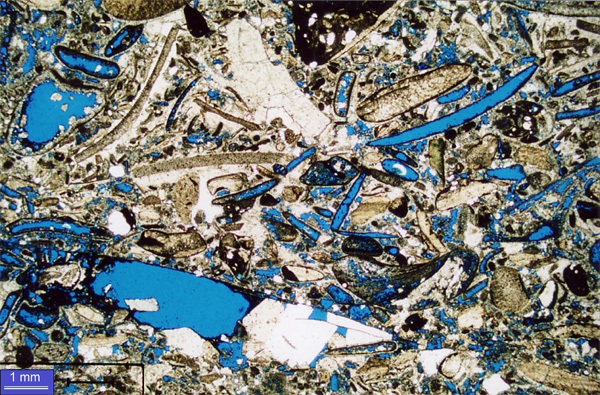
Introduction to Carbonate Environments, Facies, and Facies Tracts
Robert G. Loucks, Charles Kerans, Xavier Janson
Bureau of Economic Geology
| Design Objectives |
| Credits |
| Back |
| Top |
| Exit |
 |
 |
 |
DEFINITION OF FACIES The
term “facies” is an important in describing ancient
rocks; however, as the International Stratigraphic Guide (1976)
stated, “The general term ‘facies’ has been
greatly overworked. . . . If the term is used, it is desirable
to make clear the specific kind of facies to which reference is
made.” The Glossary of Geology, edited by Bates
and Jackson (1987), subdivides facies into types: |
||||||
|
Click
on each facies type to see the many ways the term "facies"
can be applied. The thin section below is used as an example of
the same rock being described six different ways. Each way is
correct, but you must specify in each case how you are using the
facies term . |
||||||
|
||||||
 |
||||||
|
||||||
|
|
||||||